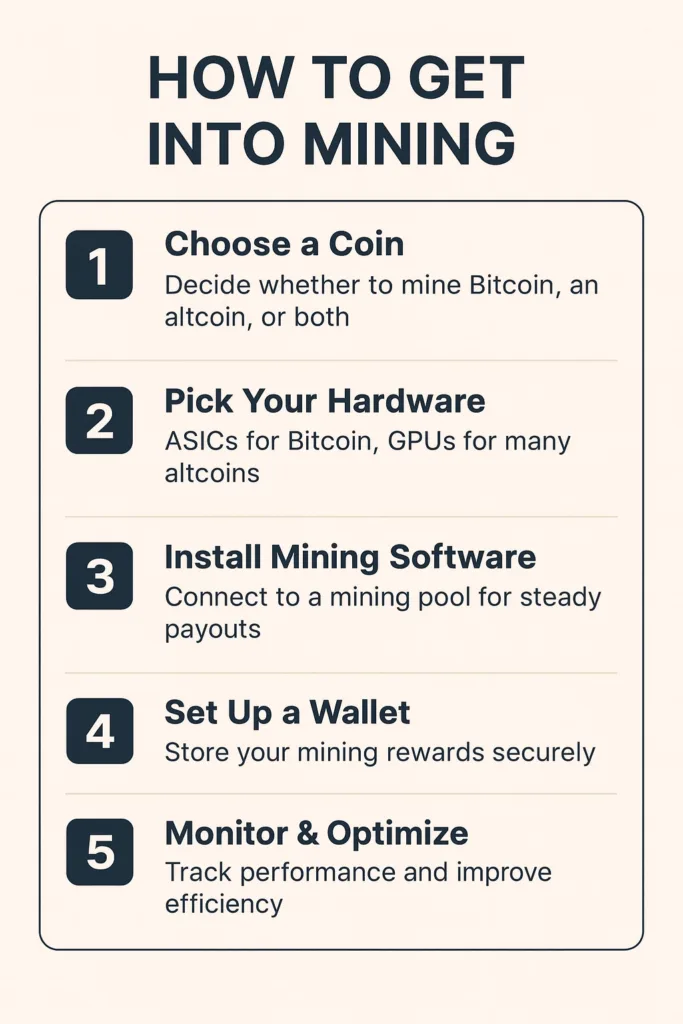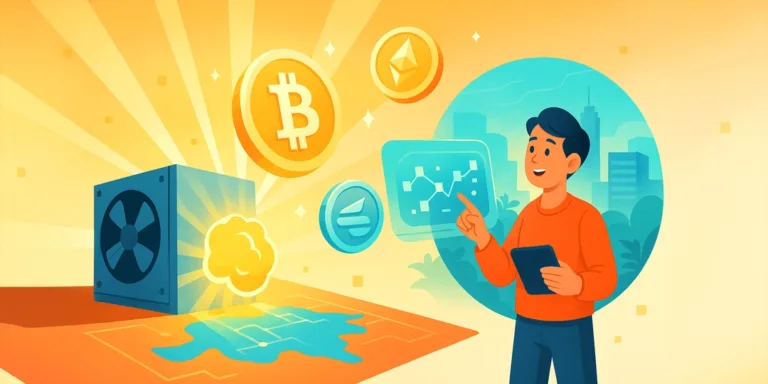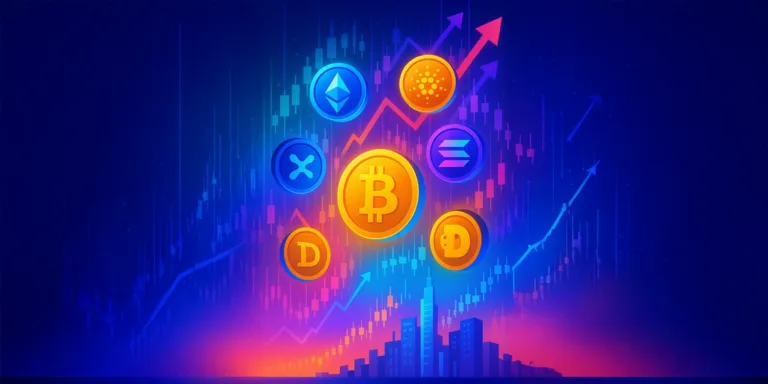If you’ve spent some time in the world of crypto, then you’ve more than likely heard the phrase “crypto mining” come up, and when you’ve heard that term, you’ve likely pictured someone with a pickaxe chipping away at gold—you’re not wrong, at least metaphorically speaking.
We can look at the term mining as more of a way to think about the usage of computers to authenticate and oversee a blockchain network as well. When crypto miners mine they confirm transactions and place those into blocks, subsequently joining these blocks to a blockchain. For their effort miners are rewarded (usually with the cryptocurrency they are mining). You can think about miners like accountants and security guards of a blockchain, authenticating and securing the blockchain for their benefit.
What do you get as rewards?
Overall the rewards you get vary based on the coin and the regulations of the given network. In the case of Bitcoin, miners are currently rewarded 3.125 BTC per mined block, along with whatever transaction fees are appended to the mined block. On the other hand, with altcoins, more frequent rewards are probable, but they are typically lower denomination rewards. The value of your reward is contingent—not only on the coin count you may have obtained—but as well on the market price when you sell or withhold your reward.
Bitcoin mining: The traditional model
Bitcoin mining uses a process called Proof of Work (PoW), where miners compete to solve complex mathematical puzzles. The first miner to solve it gets to add the next block to the blockchain and collect the block reward.
Key features of Bitcoin mining:
- Specialized equipment: Most miners use ASICs (Application-Specific Integrated Circuits) built for mining efficiency.
- Heavy power usage: These machines run 24/7 and consume large amounts of electricity.
- Intense competition: As more miners join, the difficulty increases, making it harder to stay profitable.
- Today, many individual miners join mining pools—groups that combine computing power and split the rewards proportionally.
Altcoin mining: More variety, more approaches
Altcoins, which are all cryptocurrencies other than Bitcoin, can also be mined, though the method varies depending on the coin. For example, Litecoin and Dogecoin still use the Proof of Work mechanism but can be mined with GPUs rather than the expensive ASICs required for Bitcoin. Ethereum, on the other hand, was mined with GPUs before 2022 but has since transitioned to a Proof of Stake system, which no longer requires traditional mining.
Key features in altcoin mining:
- Faster block times, meaning more frequent rewards.
- Hardware requirements vary—some allow CPU or GPU mining.
- Lower startup costs in many cases.
- Easier entry for beginners, though potential profits are lower.

Continuous progress or is there an end?
Mining is not endless in most cases. According to the Bitcoin whitepaper by Satoshi Nakamoto and data from the Bitcoin protocol, Bitcoin has a fixed supply of 21 million coins. Every four years, the block reward halves, reducing the amount miners can earn until no new coins are created, a milestone expected around the year 2140. After that, miners will rely entirely on transaction fees. Many altcoins have similar or even shorter lifespans for block rewards, though others may have ongoing emission schedules.
Power charges: Is there an alternative to consume less?
Electricity consumption is one of the biggest costs in crypto mining, especially for coins that use Proof of Work like Bitcoin. Mining rigs often run 24/7, which can quickly lead to high power bills and a significant environmental impact. However, there are ways for miners to reduce energy usage and costs without sacrificing too much performance. Some miners lower costs by:
- Using renewable energy sources like solar, wind, or hydro.
- Mining in regions with surplus or subsidized electricity.
- Optimizing hardware settings to reduce power draw without drastically hurting output.
These methods not only save money but also reduce the environmental footprint of mining.
Mining firms: Benefits, cons, and your role
Mining companies are a great alternative for people who don’t want to set up and maintain their own mining hardware. Mining companies usually have large-scale mining operations and provide individuals with options to either rent mining power or invest in part of their mining operation. This way you can participate in a mining operation without needing to set up your own technical equipment and undertake constant maintenance or electricity costs, although you also have some trade-offs.
Benefits:
- Less noise, heat, and maintenance hassle at home.
- No need to buy or maintain expensive equipment.
- Access to industrial-scale efficiency and cheaper power rates.
Cons:
- Ongoing service fees can cut into profits.
- Risk of scams—especially with cloud mining.
- Less control over hardware and mining strategies.
- Your role in this arrangement depends on your approach
As an investor, you provide capital for the firm’s operation and receive a share of mined coins. As a customer, you rent a certain amount of mining power and get payouts proportional to your share.
A final caution
Mining is what powers many cryptocurrencies, securing the networks and processing transactions on the blockchain. While Bitcoin mining is the most familiar and competitive, mining “altcoins” will provide you with plenty of options and an easier entrance point. You can mine coins by yourself, or with a pool or a mining business, but you’ll need to weigh the rewards, costs, and risks.
This is not a way to get rich quickly—it is a strategic endeavor that takes skill, resource management, and commitment. Subscribe for more mining content in the future!
FAQs
Can I mine crypto on my laptop?
Technically yes, but it’s usually unprofitable and can overheat or damage your laptop.
Is crypto mining legal?
It’s legal in many countries, but some ban or restrict it, so always check local laws first.
Do I need to know coding to start mining?
No, most mining software has a simple setup process with beginner-friendly interfaces.
How long does it take to earn one coin?
It depends on your hashrate, mining difficulty, and network competition — it could be hours or months.











